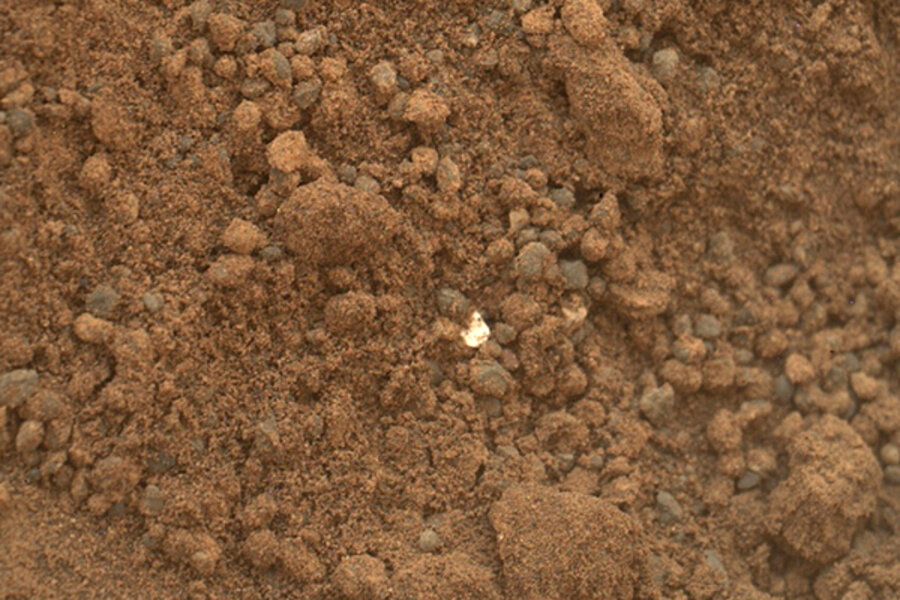For Mars rover Curiosity, at last, it's dinnertime. On the menu: dirt.
Loading...
After 70 days on Mars, NASA's rover Curiosity finally is doing what it's paid the big bucks to do: Eat dirt.
In a mission where progress so far is being measured in an excruciating series of baby steps, the rover has for the first time moved a soil sample from the Martian surface to CheMin – one of two mini laboratories inside Curiosity's chassis that are expected to reveal the minerals that comprise the red planet's ubiquitous dust.
Such a seemingly simple feat has been a long time coming, notes John Grotzinger, a planetary geologist at the California Institute of Technology in Pasadena and the Mars Science Laboratory's project scientist.
Researchers have measured soil properties beginning with the Viking landers in the mid 1970s and with each lander since – each in different locations. This has yielded the observation that "there's something about the soil so far that's been very generic to Mars," he says.
"What's really exciting about this sample that just got dumped into CheMin" and later will be scrutinized by a second lab package on the rover "is that they are going to be able to analyze once and for all the mineral composition" of this material "that swirls around the planet," he says.
It's the first test of CheMin's ability to uncover the elements in the soil grains and identify minerals in them following the rover's 352-million-mile, nearly nine-month journey to Mars. The mission's goal is to determine if Gale Crater and its towering, central Mt. Sharp could have hosted microbial life early in the planet's history.
Central to that task is the ability to deliver samples to CheMin and the second internal lab package, SAM. SAM analyzes gases from the atmosphere and from heated samples of soil and rock to hunt for organics that would signal a hospitable ancient habitat.
To that end, engineers have spent the last two weeks gathering two scoops full of soil to scrub out the inside of the sample delivery system, removing any remaining contaminants from Earth.
The first scrubbing session went well. But engineers aborted the delivery system's second silty "bath" when images of the depression the scoop left in the soil revealed a small, shiny fleck that reminded the team of what it previously dubbed "shmutz" – loose bits of plastic that came from the rover itself.
The sample-delivery system, known as CHIMRA, might not take kindly to ingesting a bit of rover detritus as part of the cleaning process. So, wary that the soil in the scoop itself might hide another piece of shmutz, the team dumped the soil and took a closer look at the shiny fleck in the depression.
After some scientific chin-scratching, a strong consensus emerged among the science team that the fleck actually originated on Mars, Grotzinger says. In a stroke, the fleck shifted from an object of concern to an object of scientific interest.
Sometime in the next few days, the science team will reposition the rover so it can use ChemCam, atop the rover's mast, to zap the fleck with its laser and figure out what it's made of, Dr. Grotzinger says.
The fleck is only about 1 millimeter across. Reseachers speculate that it could be a tiny chip of mineral cleaved by the wind-driven movement of pebbles at the site. Or it could represent a mineral that formed naturally in the space between larger grains of sand and soil.
"It probably represents a science opportunity rather than an engineering threat," Grotzinger said at a briefing Thursday.
Once the team put the fleck on its scientific agenda, it finished up the housekeeping chores with a third scoopful of soil that is now working its way through CheMin. SAM could see its first sample next week.
"The most important thing about our mobile laboratory is that it eats dirt; that's what we live on," Grotzinger says.
And with confirmation that the latest sample has been safely delivered to CheMin, Curiosity's engineers and scientist can now bid the rover bon appetit.







